My coworker did this experiment:
public class DoubleDemo {
public static void main(String[] args) {
double a = 1.435;
double b = 1.43;
double c = a - b;
System.out.println(c);
}
}
For this first-grade operation I expected this output:
0.005
But unexpectedly the output was:
0.0050000000000001155
Why does double fails in such a simple operation? And if double is not the datatype for this work, what should I use?
